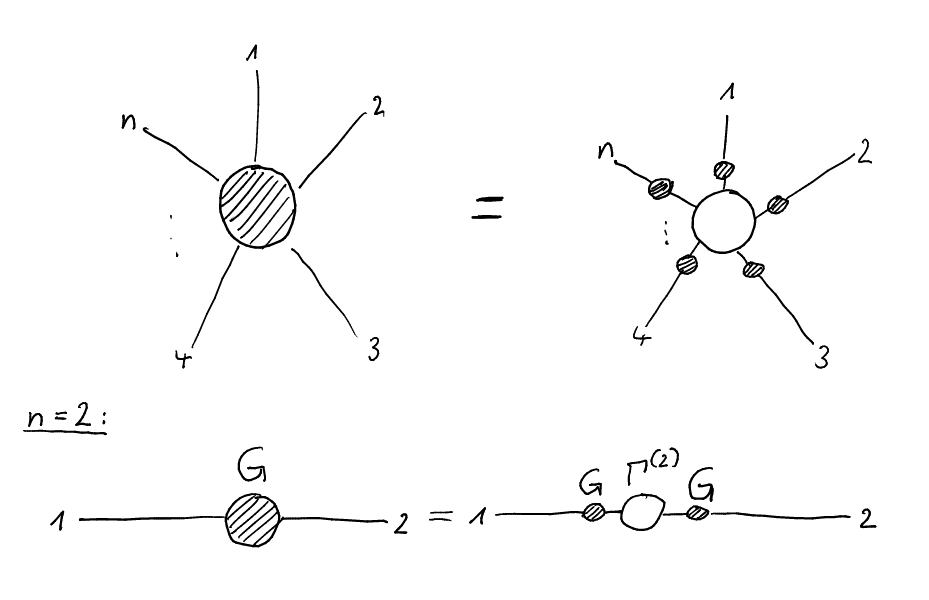I know that the 2-vertex $\Gamma^{(2)}$ is the second derivative of the effective action, but I fail to see what it is diagrammatically: is it the truncated 1PI diagram? The non-truncated one?
If this helps, the trouble comes from the identity, in massless $\lambda\phi^4$ theory, that states $$\Gamma^{(2)}=G^{-1}=P^{-1}-\Sigma\tag{1}$$ where $G$ is the propagator, $P$ is the free propagator, and $\Sigma$ is the self-energy. I understand why $$G^{-1}=P^{-1}-\Sigma\tag{2}$$ (using the geometric series), but I fail to see what $$\Gamma^{(2)}=G^{-1}\tag{3}$$ means in terms of diagrams.

